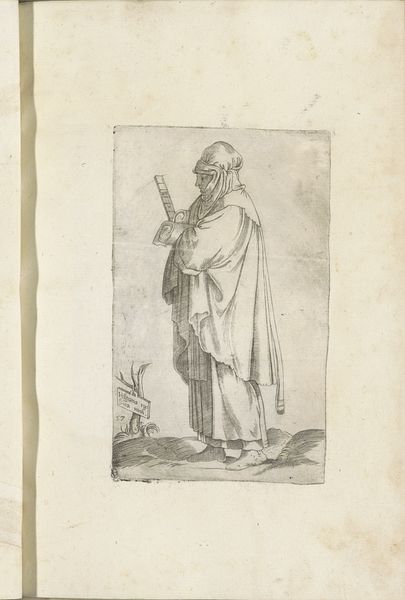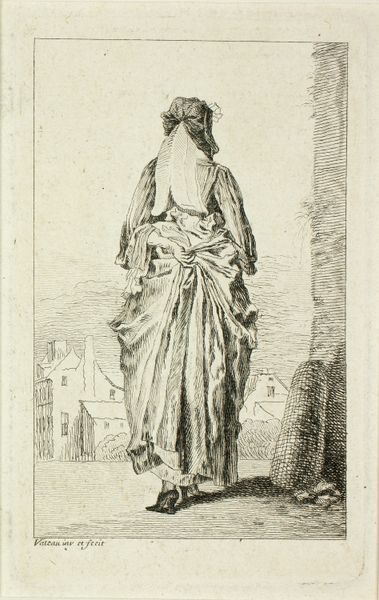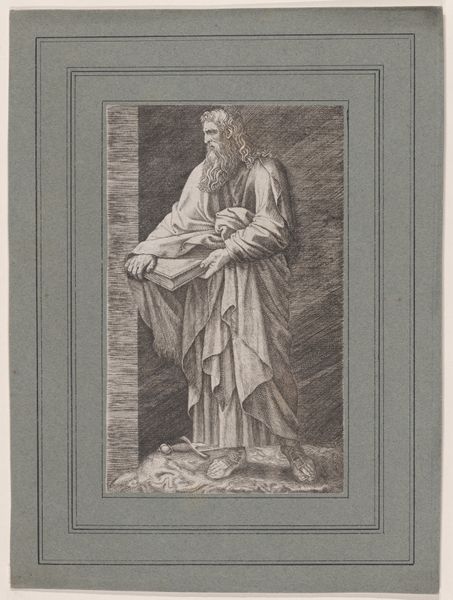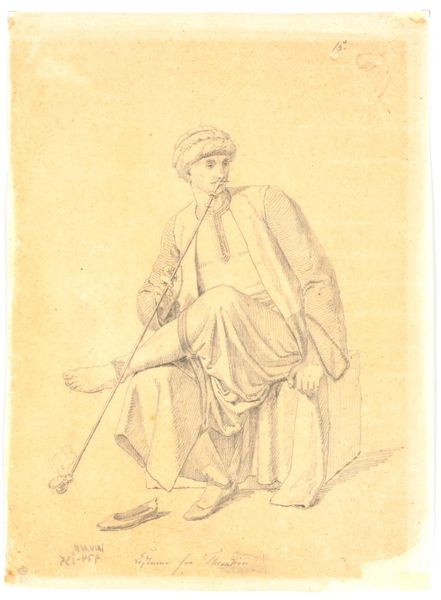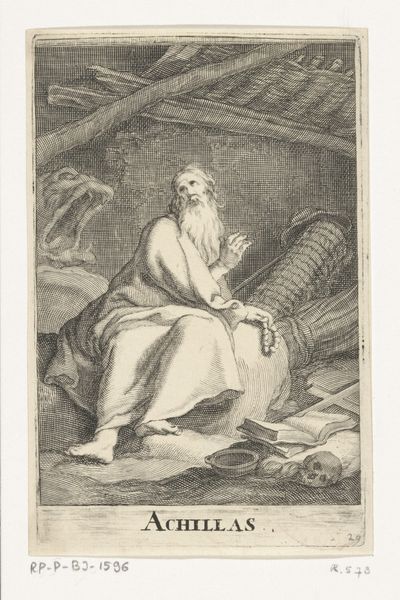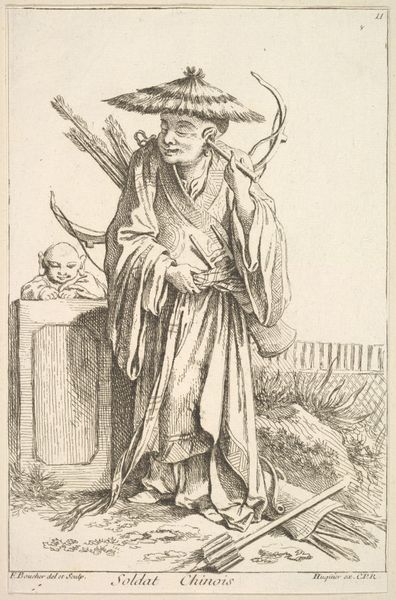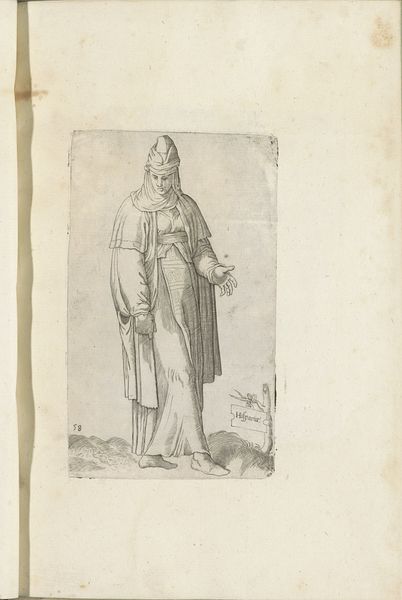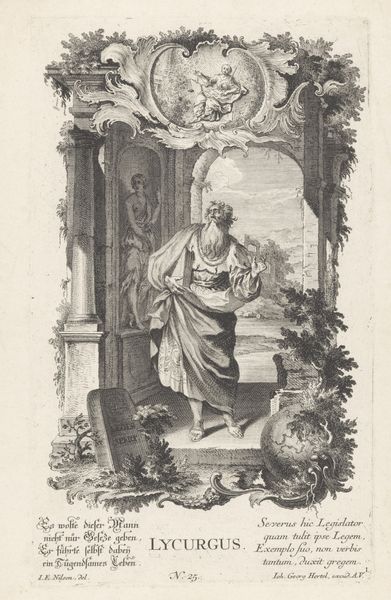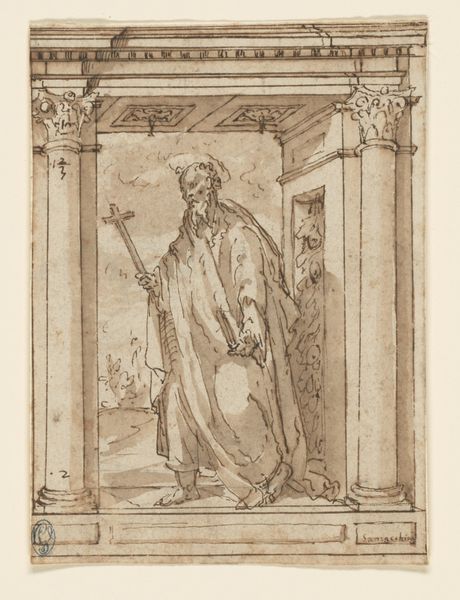
drawing, red-chalk
#
portrait
#
drawing
#
red-chalk
#
orientalism
#
academic-art
Copyright: Public Domain
Curator: Here we have "Reading Turk" by Louis Félix de La Rue. Executed in red chalk, the work offers a striking portrayal. My initial sense is one of poised observation. What is your immediate reaction to it? Editor: There's an air of melancholy that emanates from the figure. Despite the warm tones of the red chalk, he seems lost in contemplation, burdened by something beyond the pages he reads. I’m immediately aware of its Orientalist implications, which I imagine we'll delve into. Curator: Indeed. La Rue captures the subject with a kind of detached fascination, popular at that time, presenting him almost as a type rather than an individual. His costume and turban are rendered with precise detail, adhering to common tropes. The book itself carries the weight of implied wisdom, a common association. It all creates a certain romanticism. Editor: Exactly! This 'romanticism' is itself constructed upon an uneven power dynamic. By titling it "Reading Turk," it immediately 'others' him, casting him as an exotic subject meant for European consumption. I wonder what truths are omitted in his depiction—what complexities are ignored in the service of the gaze? Curator: A fair point. I suppose there is some complexity in the subject itself. The act of reading is itself culturally loaded, representing learning, contemplation and civilization. Even though it could be interpreted as reductive, in a way, the symbolism acknowledges a culture of scholarship within the Ottoman world. Editor: Perhaps, but at what cost? This scholarly portrayal risks romanticizing the exotic subject. Doesn't it reduce a multifaceted culture and individual down to stereotypes, ultimately reaffirming a Western superiority? It highlights an era marked by colonialism. It encourages a visual vocabulary to define—and then dominate—a people. Curator: I see what you mean. These stereotypes are deeply rooted, so maybe the red chalk medium contributes, evoking antiquity. He could be intentionally calling up ancient images. There’s an idealization at play, definitely. Perhaps not malicious but maybe naively complicit? Editor: Yes, maybe. Regardless, the composition echoes power structures from a bygone time, inviting a reflection on the West’s historic role of visual representation, with all its potential for prejudice. This calls into question what exactly academic art is aiming to show us. Curator: It’s compelling how the piece, rendered with delicate lines, evokes something deeper. Perhaps through pieces such as this one, and through honest consideration of art and society we can glean better understandings and perceptions. Editor: I couldn't agree more. To reflect critically on the piece, its intentions, and the context surrounding the work serves as a point of entry for richer conversations about identity.
Comments
No comments
Be the first to comment and join the conversation on the ultimate creative platform.
